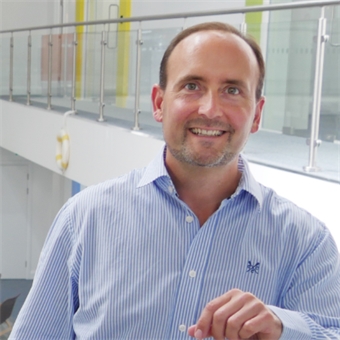Creative Thinking and Neurodiversity

Accelerative Your Company’s Creative Ability
They say that variety is the spice of life, and I’d like to take that idea one step further. I believe that variety – in other words, difference – is the secret sauce of all great teams. After all, you don’t get harmony when everyone sings the same note. Similarly, creative organizations draw their competitive advantage from an eclectic, innovative workforce. In the last year or so, you may well have seen the word “neurodiversity” floating around. Like so many things associated with creativity, it’s become something of a buzzword. The problem with buzzwords is that they’re rarely understood fully or deeply.
Understanding neurodiversity
In simple terms, neurodivergence is about differences in neurological make-up. It doesn’t refer to one particular thing, but is instead used as an umbrella term for a number of conditions including (but not limited to) ADHD, dyslexia, dyspraxia and autism. It’s also incredibly common, with many estimates suggesting that one in seven people are neurodivergent. In other words, it’s almost guaranteed that there are neurodivergent individuals already within your team. Whether they’re open about this – or formally diagnosed – is another matter. Decades of past stigma still leave their mark today.
The way we see it, there are two facets to neurodiversity in the workplace that all leaders should be aware of. One is recruitment. With a flexible and accessible recruitment programme, you can ensure that no one is missing out on a career because of neurodivergence, meaning your teams are representative of a range of neurological make-ups. The other facet is about unleashing the neurodivergent talent already within your ranks to boost creativity while ensuring your organization is a fair and inclusive place to work.
Understanding creative thinking
So, what exactly are the links between neurodivergence and creativity, I hear you ask? To truly understand this, we have to first understand how creativity works. The problem is, of course, that creativity is another one of those buzzwords. So, to ensure we’re all on the same page, let me share my personal definition of creativity: “The incubator and cultivator of new ideas, which are born from existing knowledge and combined to form a new neural pathway in the brain, leading to a personal original thought.”
Research tells us that anyone can be creative, regardless of their genetic make-up. It’s a skill which is cultivated, not predetermined. However, there are certain attributes which can increase your propensity for creative thought – and many of them are commonly associated with neurodivergence. Let’s go back to our definition of creativity for a moment… If being creative is just about spinning existing knowledge to form new neural pathways, why aren’t we all coming up with original ideas all the time? Well, the problem is it’s much easier to default to existing pathways than create new ones. Our conventions and biases so often blind us to new ideas (you may well have heard the phrase “neurons that fire together wire together” – in other words, our thinking becomes habitual).
This is where neurodivergent individuals have an advantage – because of the variations in their neurological make-up they literally “think differently” – seeing past the conventional frameworks which can limit the creativity of neurotypical individuals. It’s something that has been taken note of by many creative companies, from NASA to Microsoft, who run initiatives to recruit neurodivergent talent. Whether it’s the association between dyslexia and pattern-spotting or autism and attention to detail, these assets allow neurodivergent employees to throw out the proverbial “box” which can limit the creativity of neurotypical folk. The good news is that – with the right techniques – we can all learn to do the same.
Bringing the two together
That leads us to the big question, then: what does this mean for leaders, and how can that propensity for creativity be harnessed? The benefits of having a richly neurodiverse team are manyfold. Countless studies have shown that inclusivity and diversity are the foundation of successful businesses and positive company cultures. A neurodiverse team also means that neurotypical employees can benefit from the unique perspectives of their neurodivergent colleagues. In other words, everyone thrives and everyone benefits. There’s just one condition to all of this: accessibility.
When we talk about “being accessible” in a neurodiverse context we are referring to the ways in which neurodivergent people can understand and interact with certain materials. For example, a document with lots of writing in small font size will not be accessible for most dyslexics. A culture can also be accessible (and conversely inaccessible) because neurodivergence can manifest in social interactions, as well as in the work itself. For example, some autistic employees may be uncomfortable with eye contact or prefer to communicate via non-traditional methods. That’s why educating your workforce and introducing them to the key ideas surrounding neurodiversity – while breaking down stigmas – is essential.
An open and fully-informed work culture is where the magic happens. While some tools used by neurodivergent employees will necessarily be exclusive (such as text-to-speech tools), we always recommend integrating the work style and processes of all employees as much as possible – that way everyone can benefit from the variety of approaches on the team, and everyone feels included. It’s also why Chris designed Ayoa.com to be accessible to everyone with a visual format which can be used for everything from ideating to project management, bridging the gaps between team members and keeping everyone engaged.
At the root of the neurodiversity-creativity link is a timeless message: creativity gives companies – and humans – their edge. In order to be creative, you must learn to push yourself outside of your mental comfort zone. This can be done through a variety of techniques whether challenging thinking traps or using frameworks to reframe your thinking (have you ever tried reversed brainstorming? Coming up with ideas to worsen your problem sometimes produces the most novel solutions). Creativity is also systematic and collaborative. With a neurodiverse team, and the right tools at your disposal, you can superpower business success while creating an innovative and inclusive work environment. What’s not to love?





